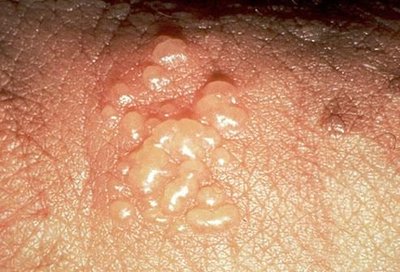
Discovering a new bump in your intimate areas can send a jolt of panic. Your first hope is that it’s just an ingrown hair or a simple pimple. And while that’s often the case, certain bumps have distinct characteristics that set them apart. Ignoring them or misdiagnosing them can have significant consequences for your health and the health of your partner.
These bumps in your private areas aren’t pimples, they’re… potential signs of a viral infection or a skin condition that requires a specific diagnosis and treatment.
Understanding the difference is the first step to getting the right care and peace of mind. Here’s a guide to decoding what those bumps might actually be.
1. Genital Warts: The “Cauliflower-Like” Growth
Caused by certain strains of the Human Papillomavirus (HPV), these are among the most common bumps mistaken for something else.
- How they’re different from pimples:
- Appearance:They often have a raised, cauliflower-like or flat, flesh-colored appearance. They are rarely a single, red, inflamed bump like a pimple.
- Texture:They are typically soft and fleshy, not hard and pus-filled.
- Pain:They are usually painless, unlike a tender, inflamed pimple.
- The bottom line:Genital warts are a sign of an HPV infection. While the warts themselves can be treated and removed by a doctor, the virus may remain in your system. Certain high-risk HPV strains are linked to cancer, making a professional diagnosis crucial.
2. Herpes Sores: The “Cluster of Blisters”
A Herpes Simplex Virus (HSV) outbreak has a very distinct pattern that is unlike a typical pimple.
- How they’re different from pimples:
- Appearance:They begin as a cluster of small, painful red bumps that quickly turn into fluid-filled blisters. These blisters eventually rupture, becoming open, shallow ulcers that crust over and heal.
- Pattern:They often appear in a group or a line, not as a single, isolated bump.
- Sensation:Before the bumps even appear, you might feel a prodrome—a tingling, itching, or burning sensation in the area.
- The bottom line:Herpes is a lifelong viral infection. While there is no cure, antiviral medications can effectively manage outbreaks and reduce the risk of transmission. A correct diagnosis is essential for management and for informing partners.
3. Molluscum Contagiosum: The “Dome with a Dent”
This is a common viral skin infection that can spread through skin-to-skin contact, including sexual contact.
- How they’re different from pimples:
- Appearance:The bumps are small, firm, and dome-shaped. The most telling sign is a tiny, central indentation (a “dell”) that often contains a white, waxy core.
- Inflammation:They are typically not red or inflamed unless you scratch them, which can cause them to spread and become infected.
- The bottom line:Molluscum is generally harmless and can clear up on its own, but it can take months or even years. A doctor can remove them to prevent spreading and speed up resolution.
4. Bartholin’s or Sebaceous Cysts: The “Deep, Painful Lump”
Sometimes, a bump isn’t on the skin’s surface but feels like a deep, tender lump near the vaginal opening or on the labia.
- How they’re different from pimples:
- Location:A Bartholin’s cyst forms when the gland at the vaginal opening becomes blocked. It can grow to the size of a golf ball and cause significant pain when walking or sitting.
- Lack of a “Head”:These cysts are deep under the skin and do not have a visible pus-filled head like a pimple.
- The bottom line:While often not serious, an infected cyst can become a painful abscess requiring medical drainage. Warm compresses can help, but persistent or painful lumps need a doctor’s evaluation.
Your Action Plan: What to Do
- Do Not Squeeze or Pop Them.This can spread a viral infection, force bacteria deeper, cause scarring, and delay healing.
- See a Healthcare Provider.This is the most important step. A doctor, gynecologist, or dermatologist can often diagnose the issue with a simple visual exam.
- Be Prepared to Discuss Your Sexual History.Honesty is crucial for an accurate diagnosis and appropriate STI testing.
- Inform Your Partner(s).If diagnosed with a contagious condition, it is your responsibility to inform recent partners so they can also get tested and treated.
Those unusual bumps are your body’s way of sending a signal. While it’s tempting to hope for a simple pimple, getting a professional diagnosis is an act of self-care and responsibility. It’s the only way to get the right treatment, protect your long-term health, and gain true peace of mind. When in doubt, get it checked out.